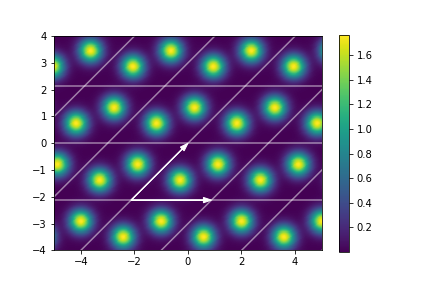This work is based on this paper.
Due to their repeating nature crystal structures can be described by a basis and a set of atom coordinates within the so-called unit cell. A compound can then be described by a Gaussian field quantity mapping from real space to real numbers.
The two plots below illustrate this mathematical description.
The periodic field quantity can be expanded in a Fourier series over reciprocal vectors. The Fourier coefficients can then be descretized to form a descriptor invariant with respect to translation and choice of unit cell and equivariant with respect to orthogonal transformations of the compound in real space.
The implementation of the descriptors can be found in voxel.py.
Examples of the methods in use can be found in voxel_tutorial.ipynb and demonstrations of the in-/equivariances in reciprocal_space_properties.ipynb.
The data is collected from the openly available AFLOW database.
Utility functions for training a 3D convolutional neural network can be found in ML_utils.py and molloader.py.
The architecture can be seen below.
There are two notebooks where the training results can be found for a smaller and larger dataset: VoxelNet_all_221_cp5_oxides.ipynb and VoxelNet_all_3sp_oxides.ipynb.
